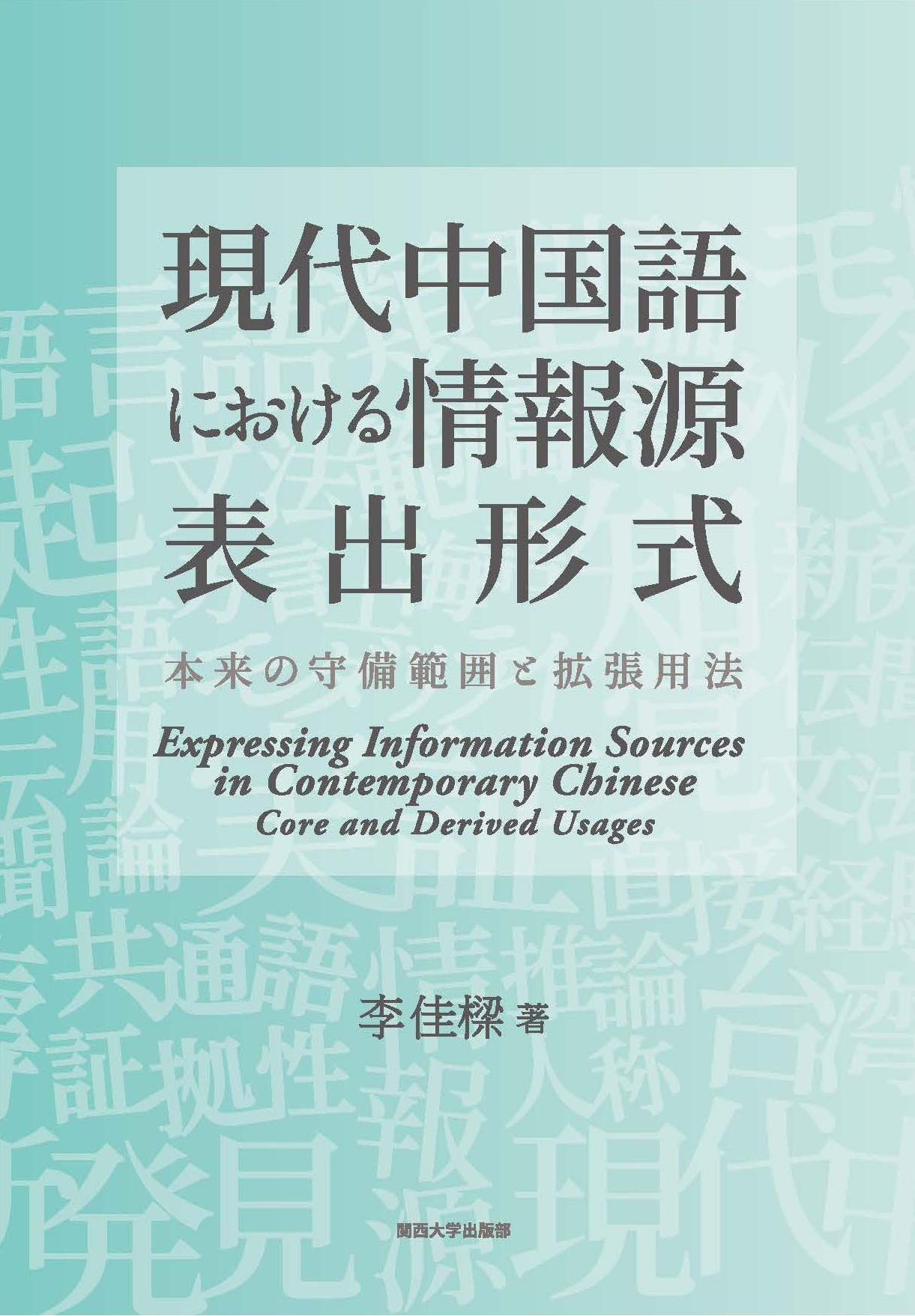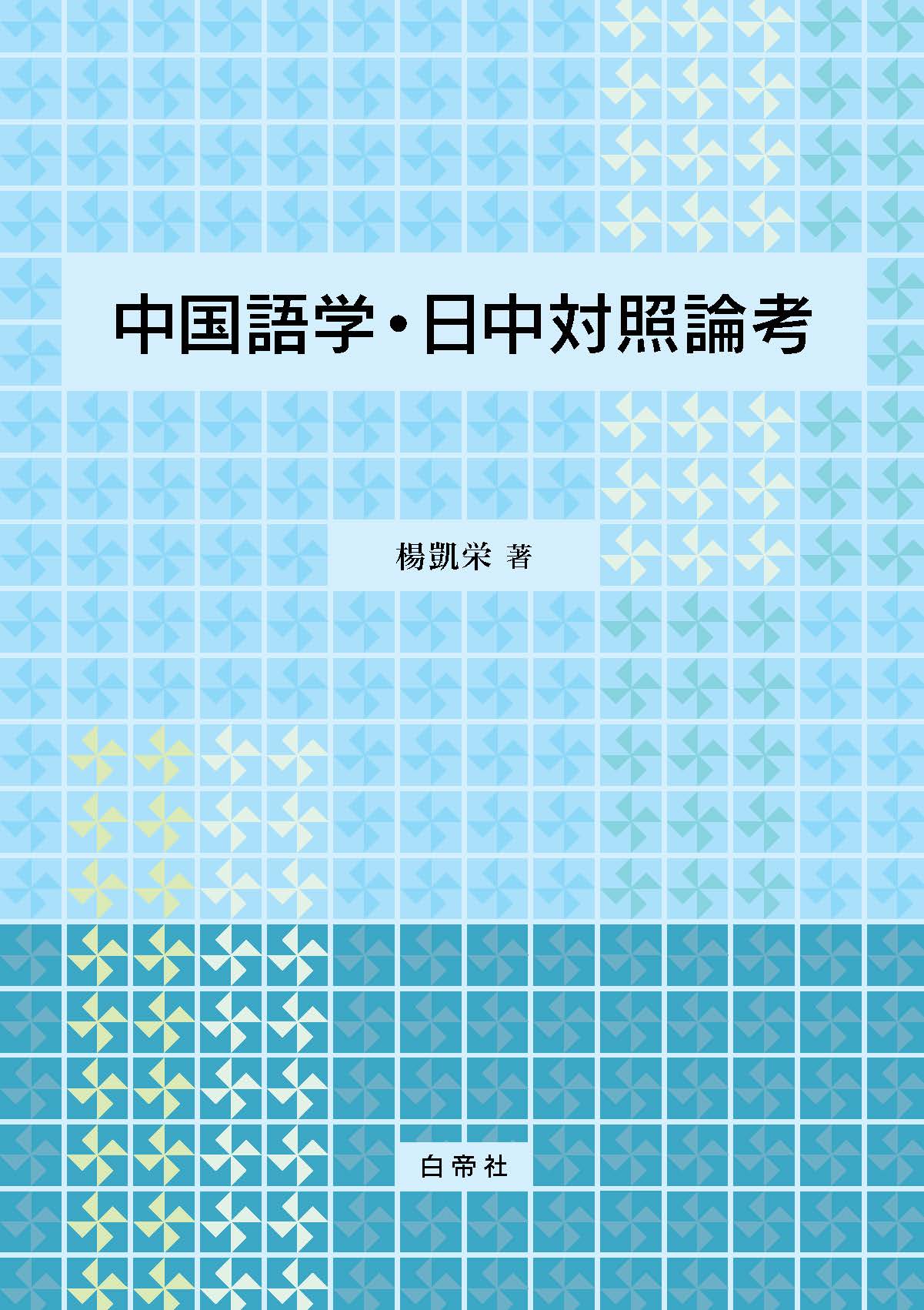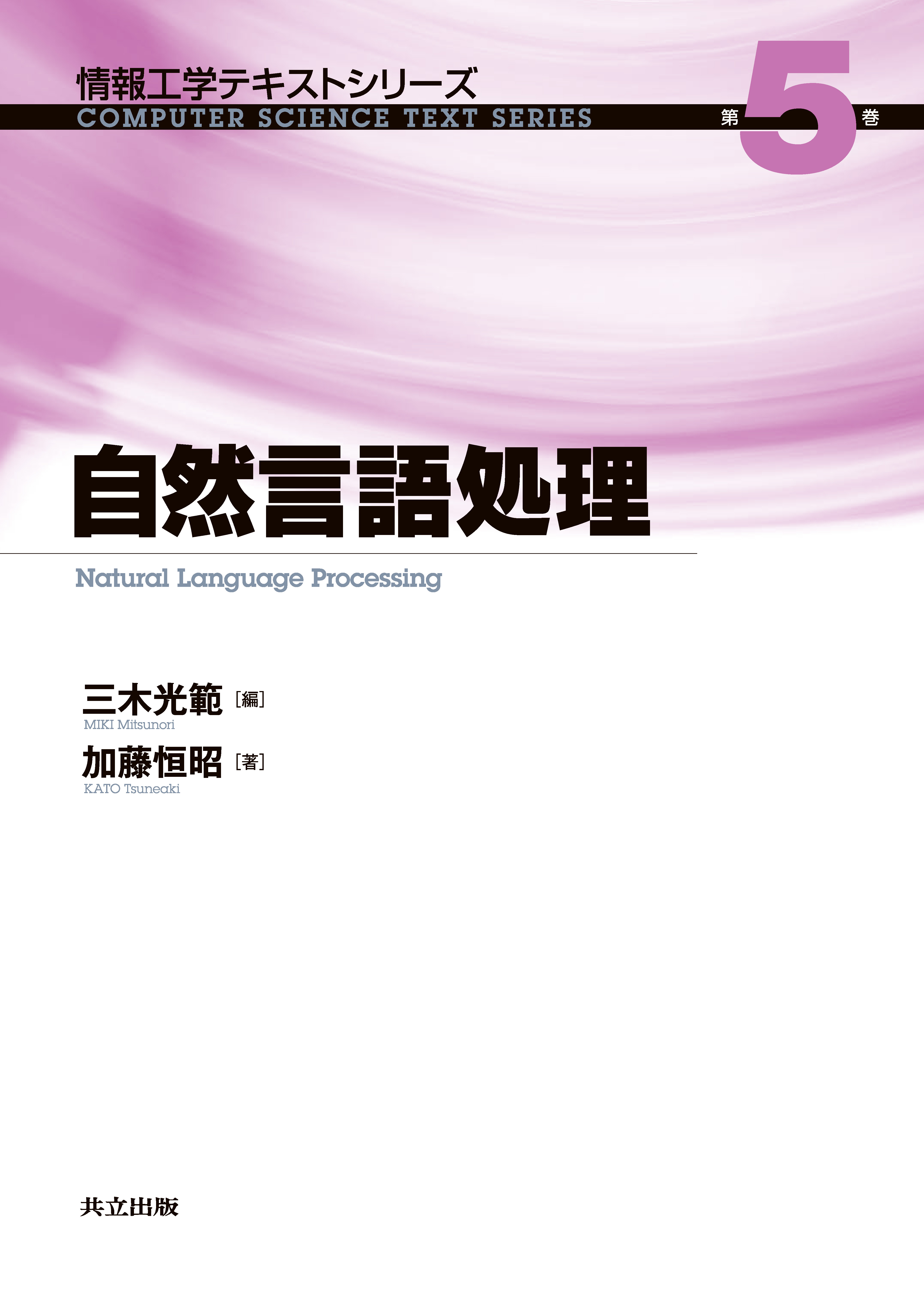
Title
Gendai-Chugokugo ni okeru Jyohougen Hyoshutsu Keishiki (Expressing Information Sources in Contemporary Chinese - Core and Derived Usages)
Size
268 pages, A5 format, hardcover
Language
Japanese, Chinese
Released
February, 2019
ISBN
978-4-87354-684-1
Published by
KANSAI UNIVERSITY PRESS
Book Info
See Book Availability at Library
Japanese Page
Let us consider some Japanese expressions used when referring to volition or a wish. For example, when expressing a wish to drink water when thirsty, the suffix used with the verb “drink” (nomu) will differ depending on whether the speaker is thirsty (mizu, nomitai) or the listener or a third party is thirsty (mizu, nomitagatteru). In other words, in the case of Japanese, the mode of expression differs depending on the grammatical person of the person having the wish.
When viewed “objectively” from the position of the speaker, the means by which they know their own will or wish cannot be the same as the means by which they know the will or wish of another person. In the latter case, there is no way of knowing this other than by directly asking that person or inferring it from some outward sign such as their facial expression or behaviour or on the basis of past experience. In this sense, Japanese, which differentiates the suffixes used when expressing the volition or wish to drink water and in which differences in the source of information are directly related to differences in expression, may be quite logical.
But when expressing the same situation in Chinese, the form of expression does not change depending on who wants to drink the water, and the expression “xiang he shui” is used. This sort of phenomenon is a well-known fact even for learners of Chinese at the beginner’s level, and it may be considered to be related to the fact that Chinese is an isolating language with few inflections. Does this mean, then, that differences in information sources are never reflected syntactically? Or does the information source have some influence on syntax, even if not to the extent in Japanese, an agglutinative language? This is one of the main concerns of this book.
Another issue is mismatches between form on the one hand and meaning and function on the other. To give just one example, in the Shanghai dialect, when the phrase ɦikã, consisting of a third person singular pronoun and a verb of utterance, is placed at the end of a sentence, it does not have the literal meaning of “he/she says/said” and instead becomes a sentence-final particle expressing mirativity. For example, the sentence “ŋo-ɕiã-tɕ‘iʔ-zo-ɦikã” [I-want-drink-water-surprisingly] is used when feeling surprise at oneself for wanting to drink water. In this way, a phrase that ought to express an information source is extended to express an attitude of mind or shifts completely in its usage. Why are such extensions or shifts in usage possible?
When seeking answers to such questions, the concept of evidentiality is quite thought-provoking. In recent years, evidentiality has come to be placed increasingly alongside concepts such as tense, aspect, and modality. But in past research on evidentiality a theoretical framework that can rationally explain Chinese, an isolating language, has not been adequately presented. This book first explores such a theoretical framework and throws into relief the system for expressing information sources in Chinese and then examines the meaning and function of some constructions and function words related to the expression of information sources in Chinese and how they evolved. This book could be said to be required reading in this field of research.
(Written by LI Jialiang, Associate Professor, Graduate School of Arts and Sciences / 2022)



 Find a book
Find a book


 eBook
eBook
